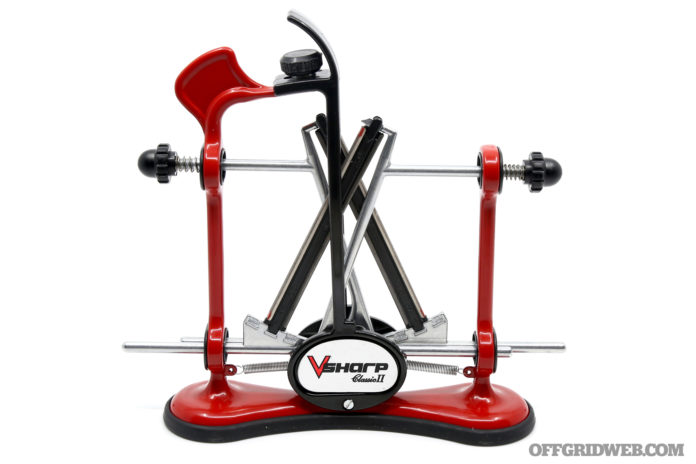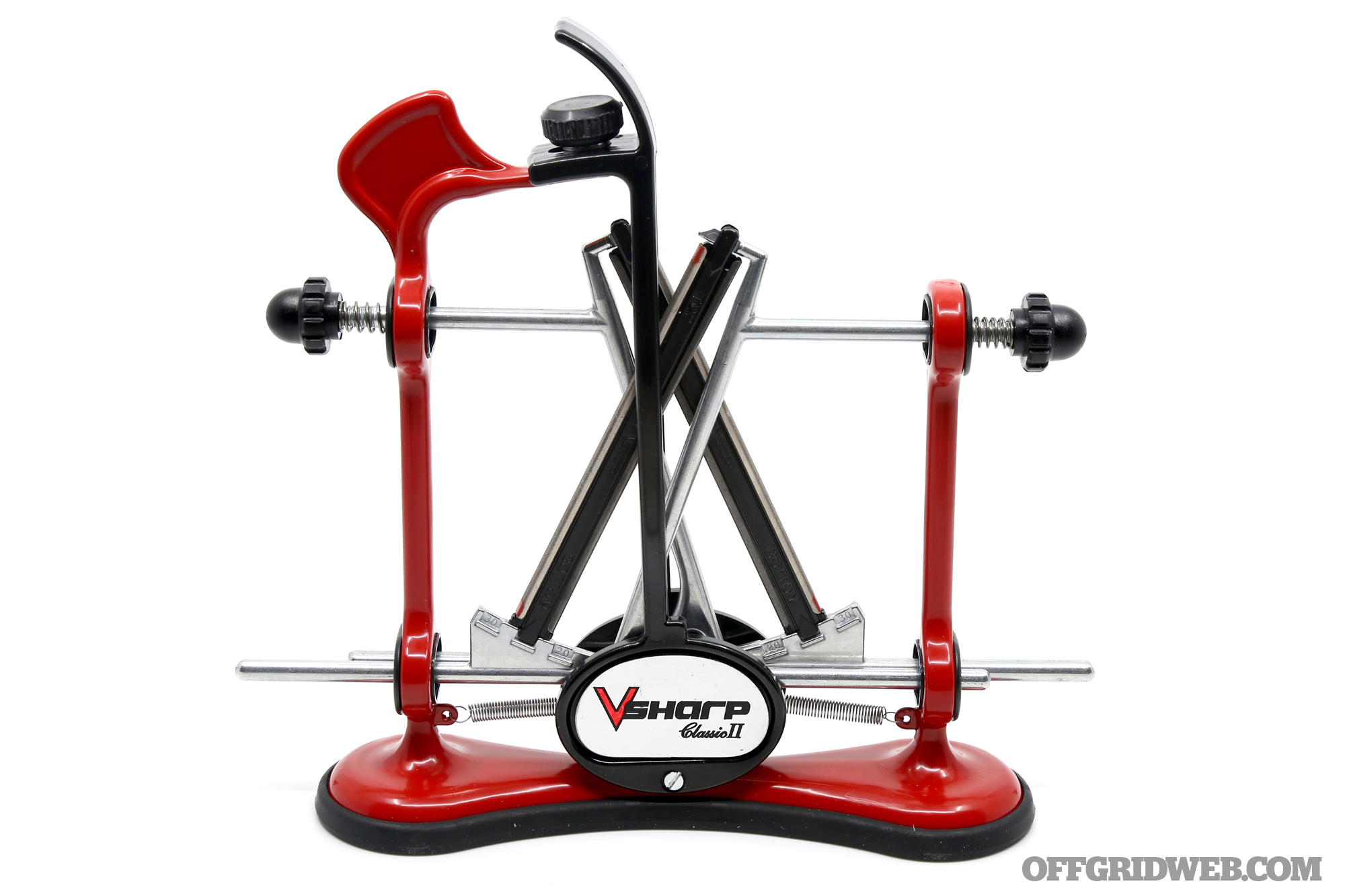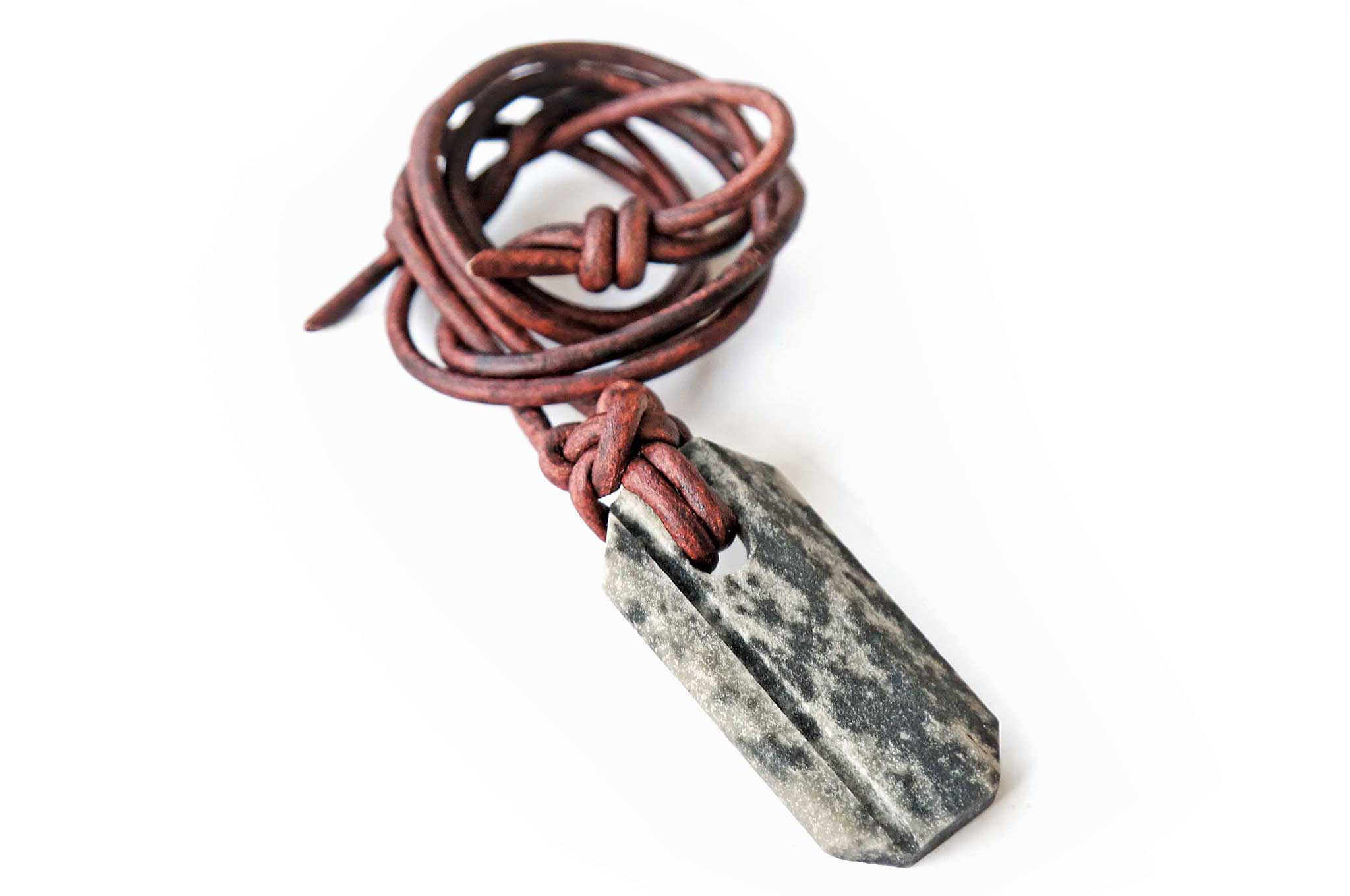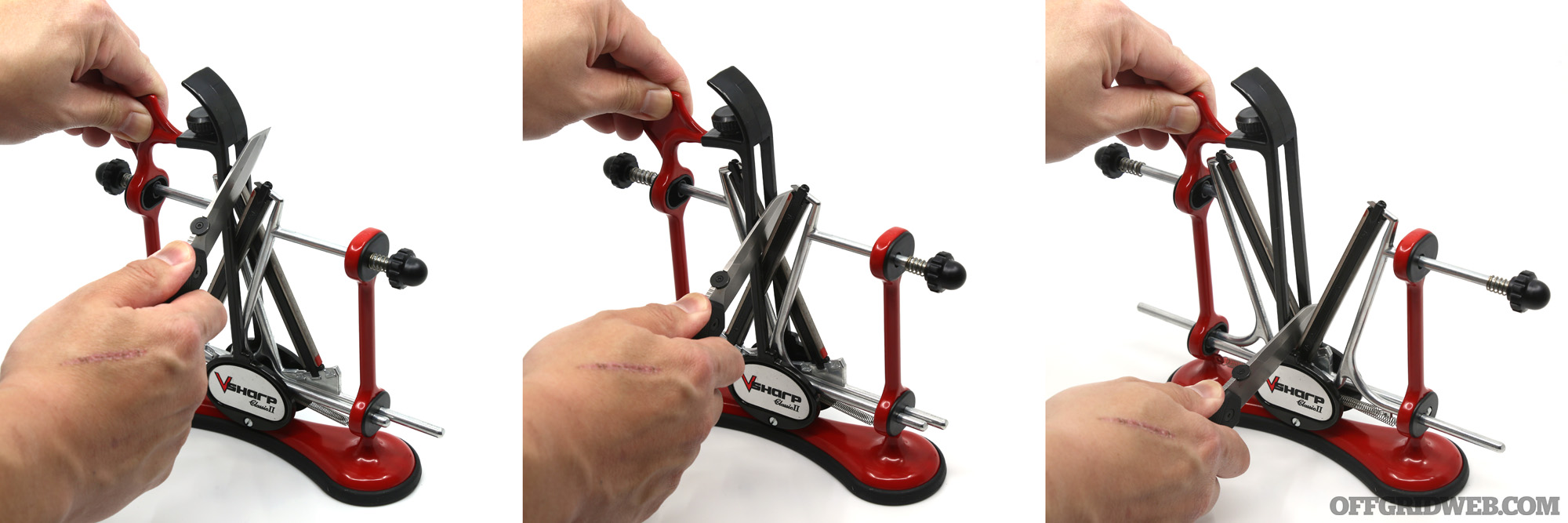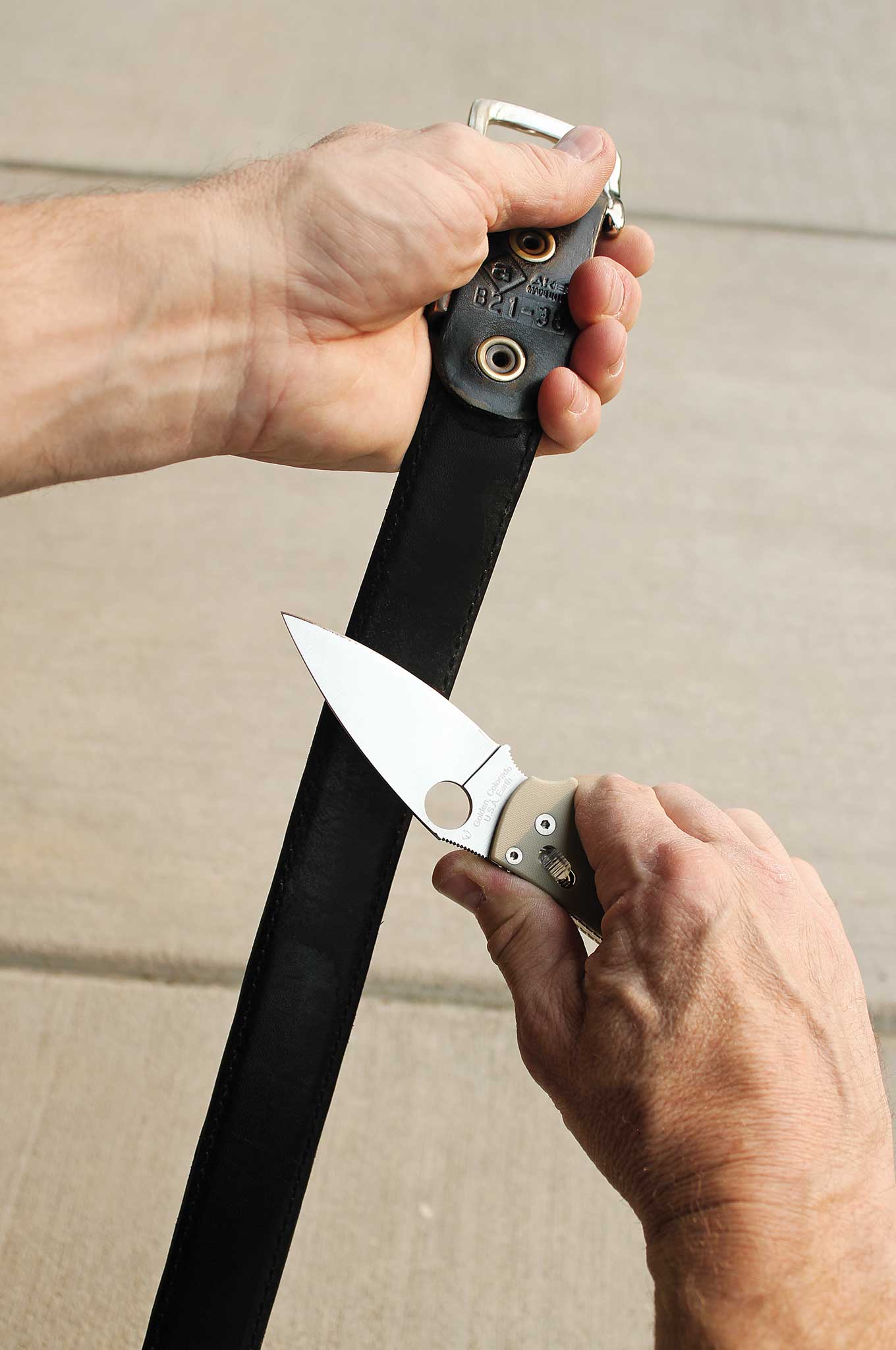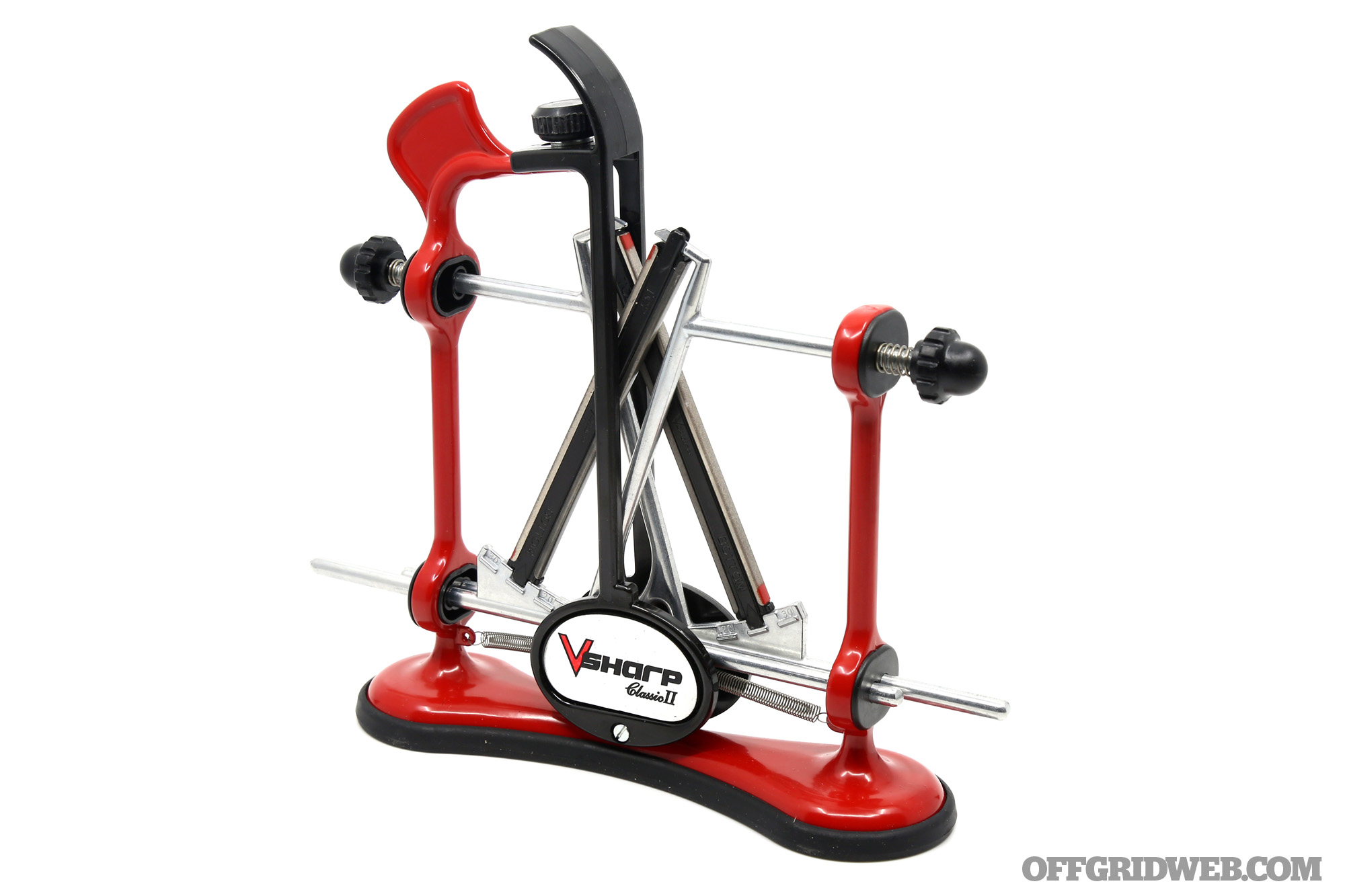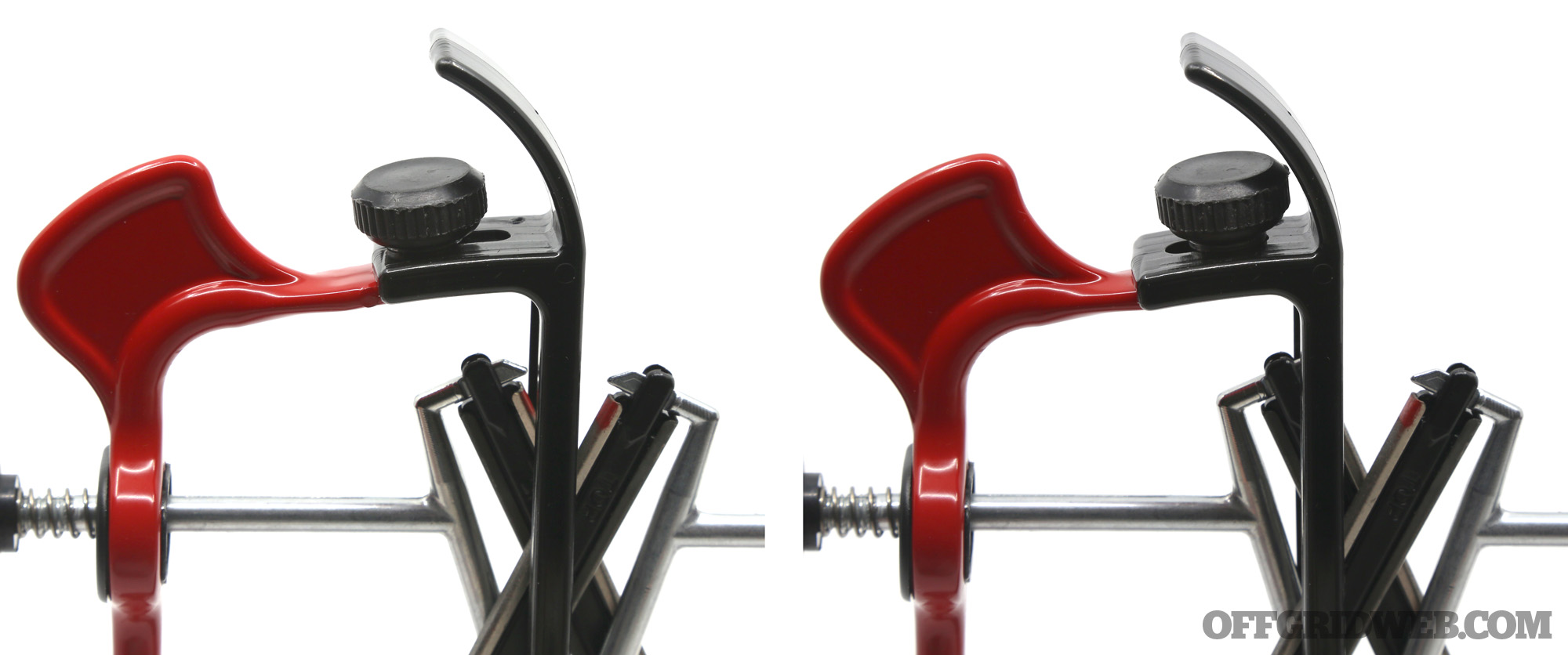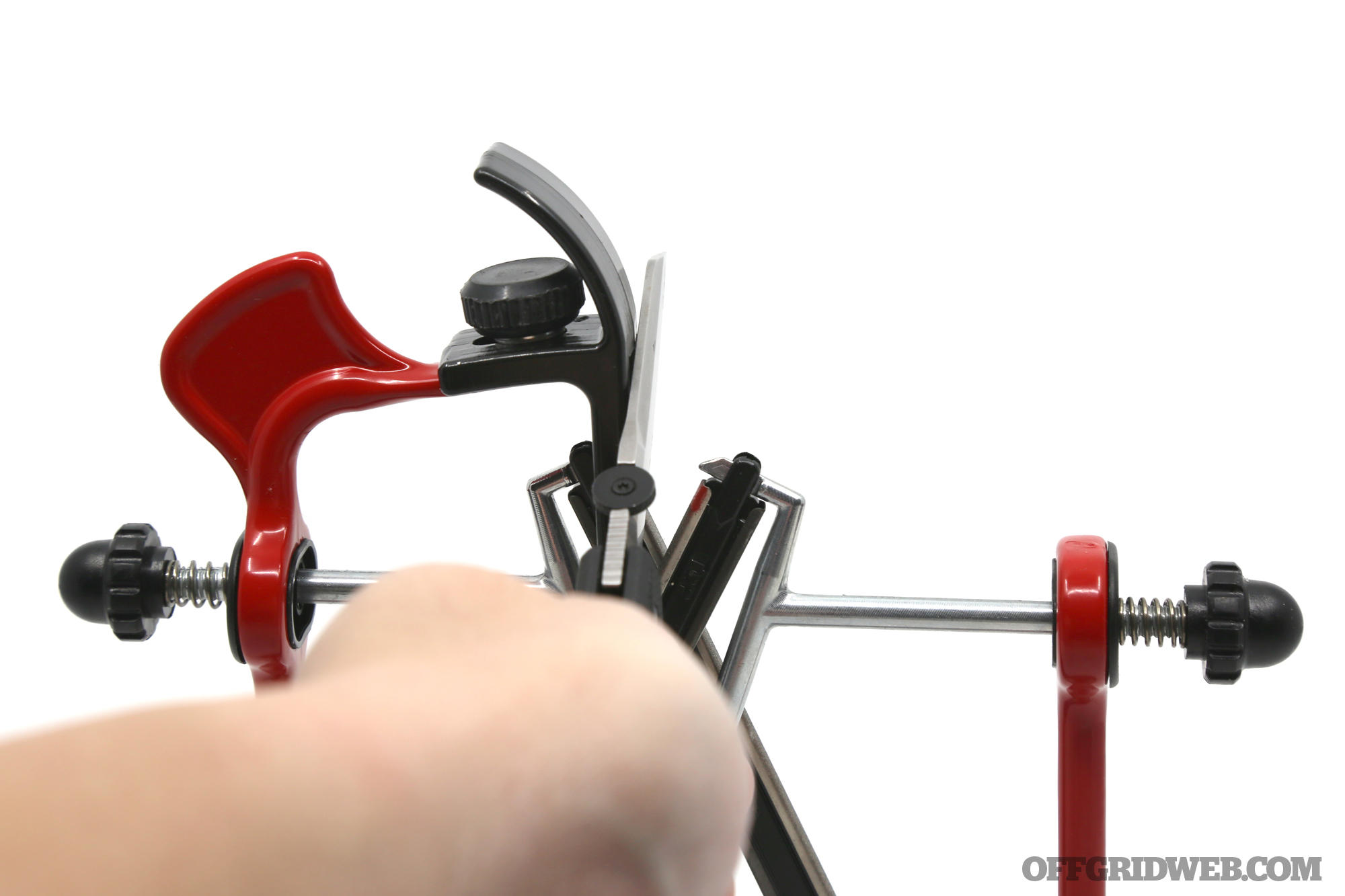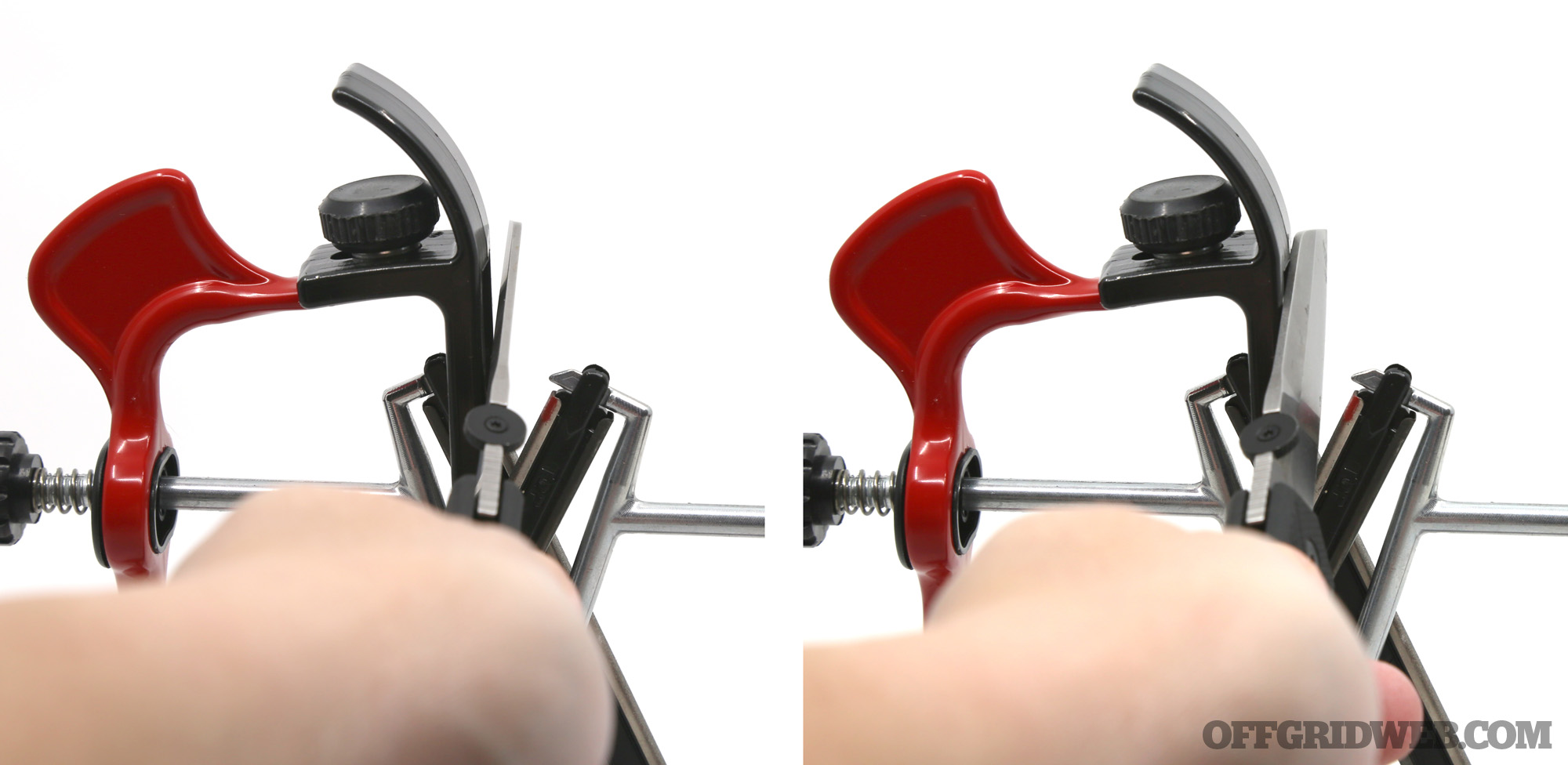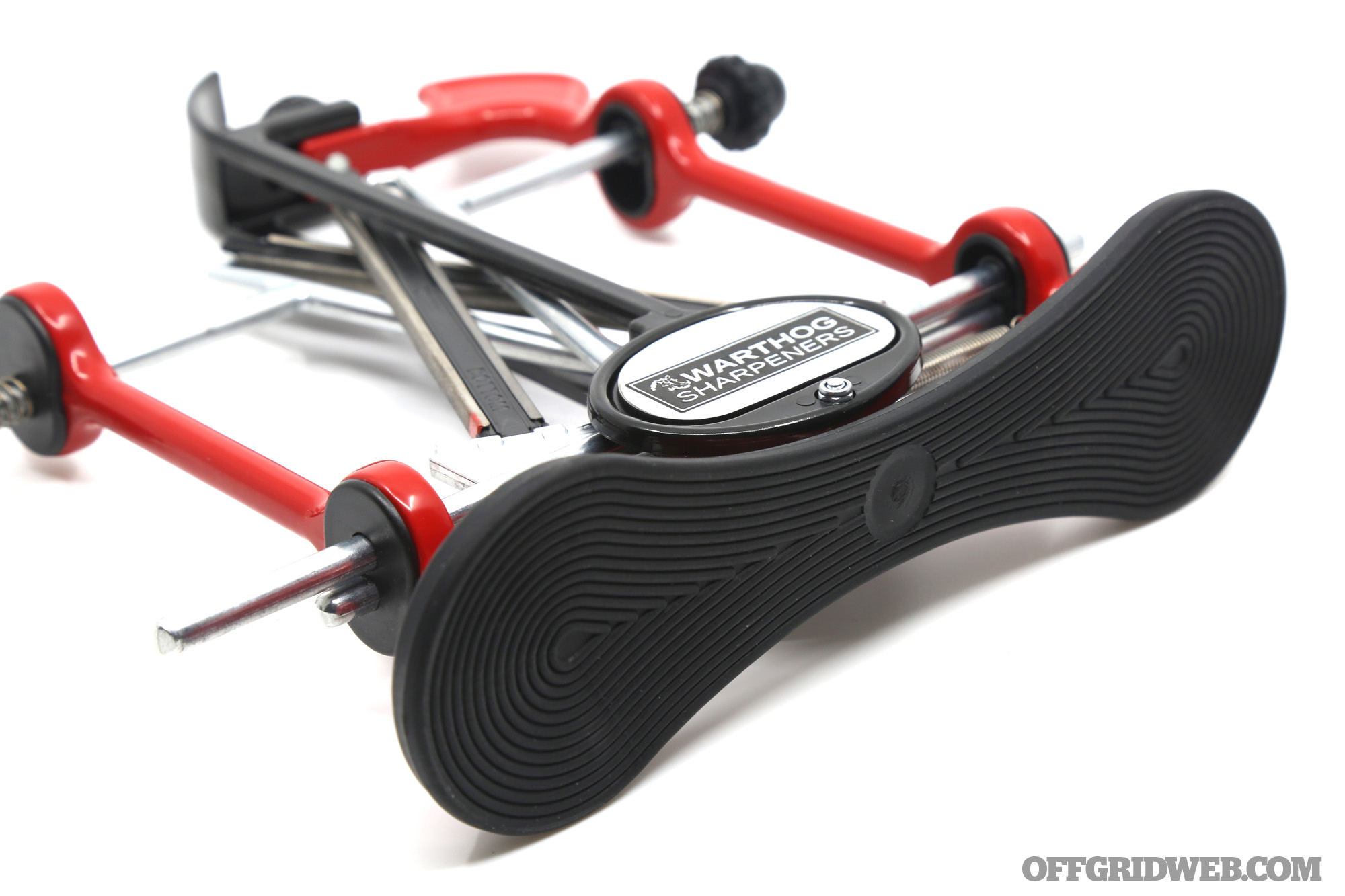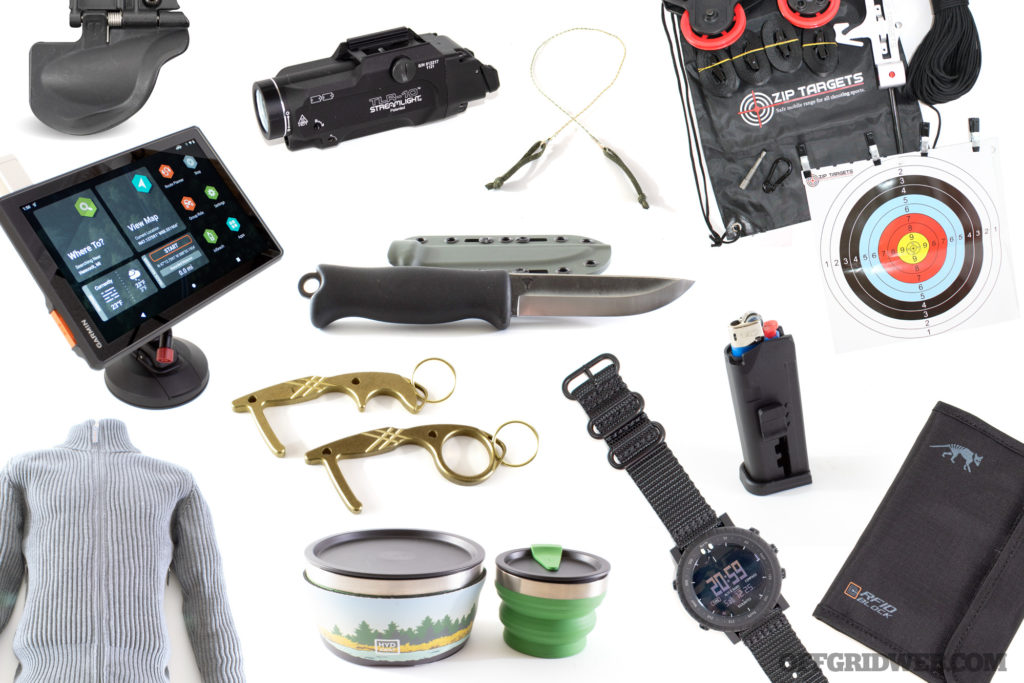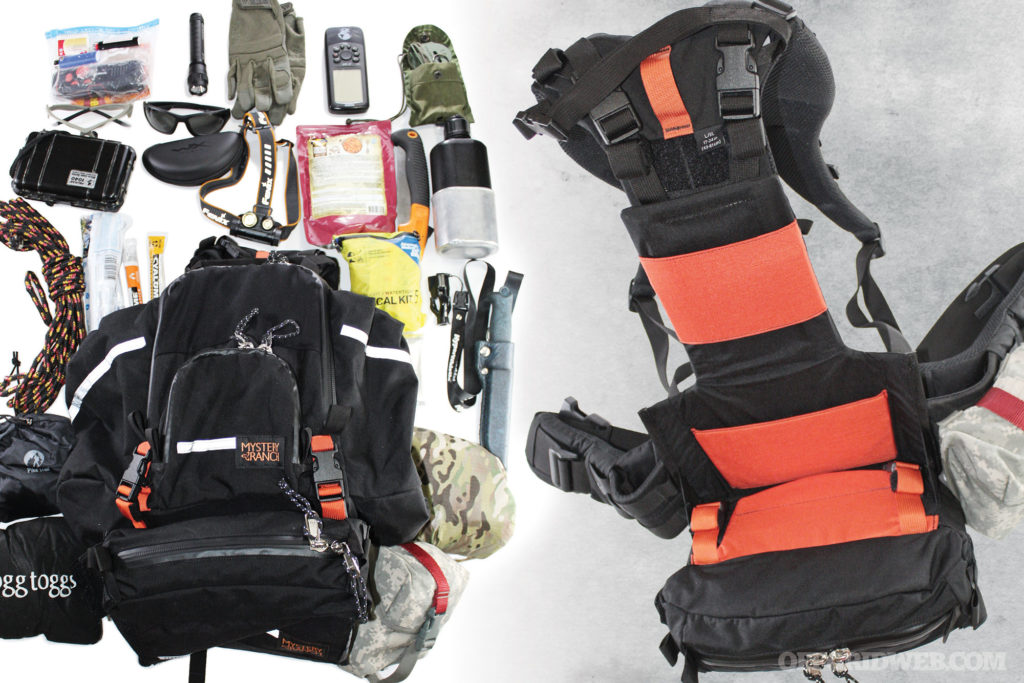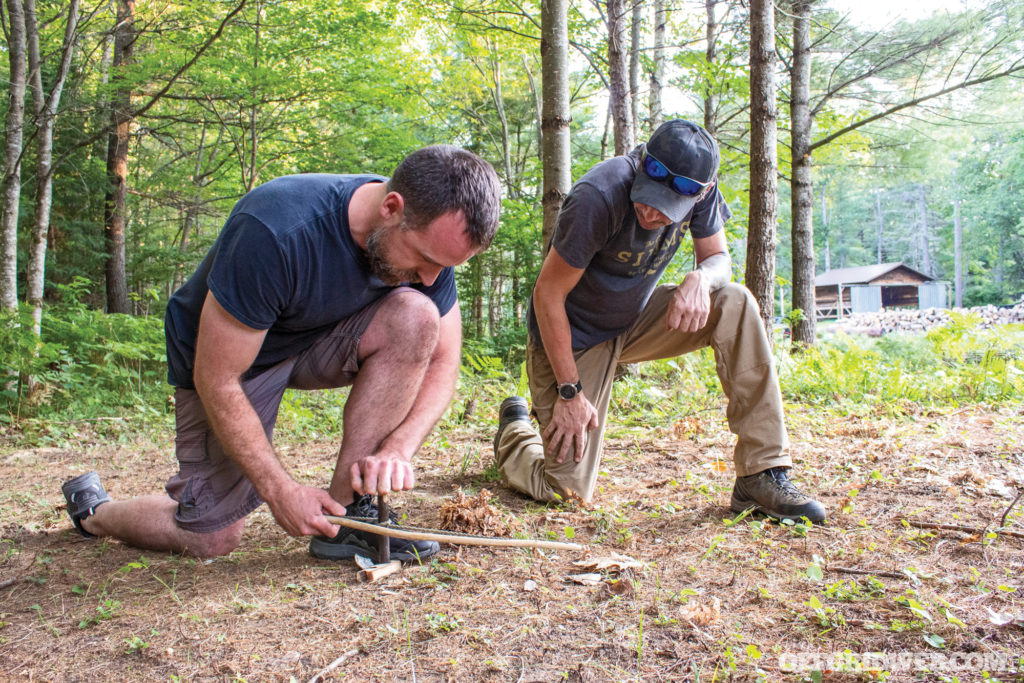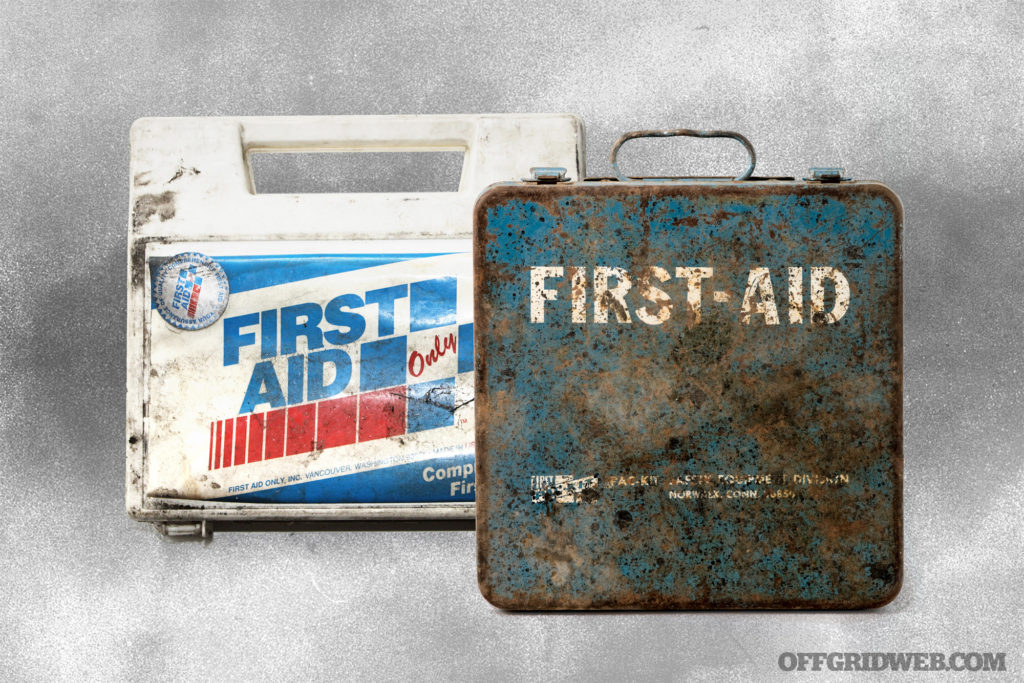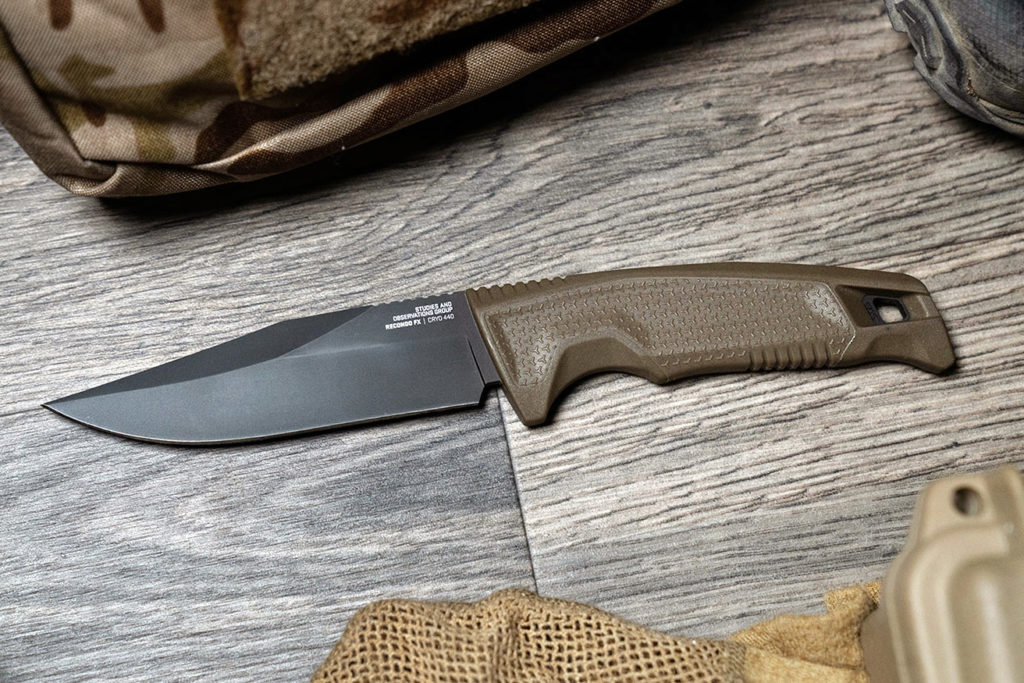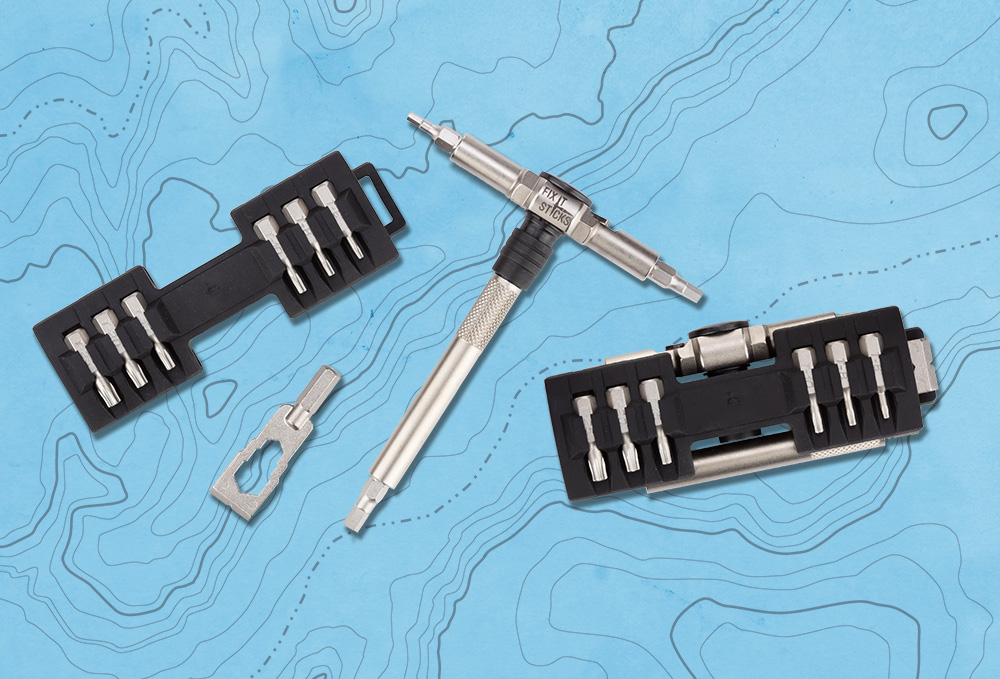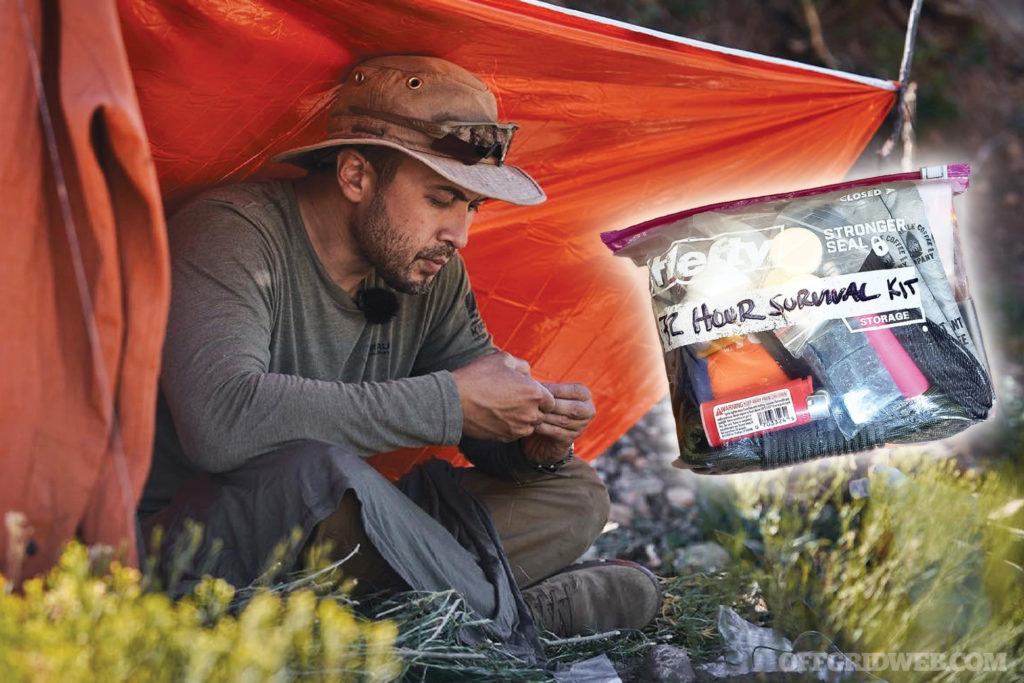As the saying goes, the most dangerous knife is a dull one. Why? Because when the edge doesn’t do the cutting, most people try to muscle their way through a medium — which can lead to slippage and accidentally driving the blade into your hand or other body parts. With a razor-sharp blade, you’ll be able to slice or stab through hide, meat, rope, or packages with ease. That’s why we wanted to take a good look at the V-Sharp Classic II from Warthog Sharpeners. While it looks like some elaborate equipment stand for a kid’s chemistry class, this is actually a manual controlled-angle sharpening system. It’s easy to use and helps return a mean cutting edge to almost any knife you throw at it — and quickly — but is the V-Sharp Classic II the right type of sharpener for a preparedness tool chest?
A Brief History on Knife Sharpening
Before we can dive into whether the V-Sharp Classic II is ideal, we have to talk about what makes it unique. And we can’t talk about what makes it unique without first giving a brief history lesson.
Humans have been sharpening edged tools since at least 75,000 years ago, according to a study led by the University of Colorado Boulder. Of course, back then our prehistoric forebearers were using rocks, bones, and wood to create fine edges on stone tools.
Fast-forward thousands of years and we get the grindstone, a huge stone disk that spun quickly (usually by crank, pedal, or water power) to sharpen blades. But those were operated by trained tradesmen who often sat (or in some cases laid) close to the giant disks as they sharpened tools. (Hence the phrase “nose to the grindstone.”)
Above: This Viking Whetstone pendant from Wazoo Survival Gear harkens back to the stones our ancestors used to sharpen their blades.
On the other hand, whetstones — which came and still come in different shapes and sizes and are made from various materials — were much smaller and lighter. So, anyone could use them for a quick sharpening or overall maintenance. Today, they generally look like slabs of gritty stone in the shape of a thin brick.
Then, there’s the sharpening rod, which can be made of steel or ceramic. Traditionally, these don’t sharpen as much as they straighten out burrs or folded edges. Today, many of them are made of a diamond-coated abrasive, so they can also remove steel to both sharpen and straighten.
A more recent breakthrough in designs is the pull-through sharpener. Certainly, there are other modern types, but this one in particular has become popular because of its convenience factor.
In pull-throughs like the V-Sharp Classic II, two intersecting sharpening rods (or crock sticks) are placed on a metal, plastic, or wooden base so that they form a V. The blade is then pulled through the V opening, sharpening the cutting edge on both sides at the proper angle while allowing the user to keep the base stationary on a table or bench.
Glossary of Common Terms
Here’s a helpful guide to hone your understanding of sharpening terms and grind out any confusing misnomers out there.
Bevel: This refers to the angle/surface of a blade that meets another angle/surface to form the cutting edge.
Grit: Just like with sandpaper, this refers to a sharpener’s abrasive particles. The lower the grit, the coarser it is. A 120 grit is excellent for reforming a cutting edge, while 1,000 grit is more ideal for polishing an already sharp blade.
Hone (Versus Sharpen): While today people use these words interchangeably, they actually don’t mean the same thing. Sharpen means to remove material from the blade to create a new cutting edge. Honing, on the hand, means to realign the edge after it’s been bent or folded after hard or repeated use.
Strop: A device, usually a cloth or leather strap, used to polish an already sharpened edge.
Above: Like a barber’s straight razor, knife edges can be touched up to cut more smoothly by stropping on a piece of leather — like this gun belt.
Whetstone: The term “whet” means to sharpen and not “wet” as in liquid. To add to the confusion, though, there are some whetstones that do require water or oil. So, while not all whetstones are water stones, all water stones are indeed whetstones.
How the V-Sharp Classic II Sharpener Works
As mentioned, pull-throughs are pretty easy to use, and the V-Sharp Classic II is no exception.
Simply place the base of your blade at the V-shaped opening and push down as you pull the knife back toward you until the blade’s tip reaches the V. Then, rather than completely removing the knife, simply push the blade back up along the same path until the base of the edge is back at the V.
The Warthog sharpener uses calibrated spring tension so that the 325-grit diamond-coated rods keep continuous pressure on the knife, ensuring symmetrical sharpening.
And so long as you keep your blade flat against the adjustable guide, the rods take the guesswork out of sharpening at the correct angle for a given edged tool.
Above: The V-Sharp Classic II comes with a blade guide that you can adjust to accommodate for a range of edged tools.
For example, if you set them to 30 degrees, you’ll produce a wide durable bevel that’s most ideal for chopping — think cleavers or machetes. If you set the V-Sharp Classic II to 25 degrees, you’ll create a balanced edge that offers cutting power without folding easily — e.g., hunting blades or everyday-carry pocketknives. And if you switch to 20 degrees, you’ll produce a narrow bevel that’s more susceptible to folding but can slice with precision — imagine a box cutter or certain chef’s knives.
Once you’ve achieved a cutting edge with the diamond-coated abrasives, it’s time to steel the blade — aka honing (or realigning) the edge with a steel to remove burrs and get a smooth finish.
To do that with the V-Sharp Classic II, just unclip and flip the rods to have the finishing steels facing upward in the V opening. Then, use the same sawing motion back and forth as you did when sharpening it.
Warthog Sharpeners V-Sharp Classic II
Weight: 1.56 pounds
Dimensions: 9 by 8.25 by 2 inches
MSRP: $90
URL: warthogusa.com
The Pros
Why should you consider the V-Sharp Classic II? Because it delivers the three Cs: convenience, consistency, and compactness (sort of … but we’ll get to this topic later).
Convenience: There’s no doubt that today’s electric knife grinders offer the quickest way to sharpen an edged tool. But not everyone can afford a quality water-cooled sharpening system or has the workspace or garage to house it. On the flipside, a decent bench whetstone can be had for less than $20, but can be a pain to use because some require oil or water and plenty of elbow grease.
The Warthog design is a happy medium.
For less than a C-note, it allows you to remove steel on both sides of the blade during the downward and upward strokes, doubling the amount of sharpening while shortening the number of strokes needed to get a razor’s edge. In some cases, you’ll need only 10 to 15 strokes versus twice or three times that amount with other pull-throughs.
Above: The blade guide makes it stupid-simple to keep your tool at the correct angle by simply pressing your blade flat against the guide.
And because the sharpening rods are adjustable, you’re essentially getting three sharpeners in one.
Plus, the sharpening rods can slide out to swap in different grit levels or materials, such as ceramic.
Consistency: Thanks to the blade guide and the labeled angle slots at the bottom of the inner frame, you get repeatability. There’s no second guessing whether you’re holding the blade at just the right angle. This is a huge relief for folks like us who didn’t fare so well in geometry class.
Just set the rods to the proper angle for your tool, adjust the blade guide to the corresponding position, then simply push and pull along the same path.
Compactness: Sharpeners have shrunk quite a bit since the era when knife grinders used disks the size of a big rig tire. Compared to those giant grindstones, the V-Sharp Classic II is downright petite. This Warthog device has a slim profile when compared to other pull-through sharpeners, which are often a rectangular or cylindrical block about the size of a short length of 2×2 lumber.
It stands approximately 9 by 8.25 by 2 inches (at its widest points) and weighs about 1.5 pounds. This means it can be stowed on a shelf in between other gear or equipment quite easily.
Above: The blade guide shows you very quickly if you’re holding your knife at the incorrect angle.
The Cons
Despite being slim and relatively lightweight, it’s not portable enough to jam into your bug-out bag (BOB). Obviously, there are other sharpener options for preppers, hunters, and minimalists who want the smallest and lightest tools in the field. In fact, many popular companies already make pocket sharpeners that come in the form of a key chain. So, the V-Sharp Classic II isn’t ideal for your BOB or if you have space constraints.
Another pro that’s ironically enough also a con is its relative lightness. Most pull-throughs are either blocky or hefty for good reason: to keep the sharpener stationary so it doesn’t move when you slide the knife through. The stability prevents accidents and sloppy sharpening.
Unfortunately, the V-Sharp Classic II is both tall and light, so it’s easy to knock over if don’t get a good hold of the thumb grip, which is just a 1.5-inch-wide tab on the top of the frame. That’s room enough for only two or three fingers to keep the whole thing upright. Other pull-throughs usually have a handle you firmly grasp with all five fingers. This Warthog doesn’t need a full-on handle, but more surface contact would be nice.
Moreover, while it has a grippy rubber bottom, if you remove the rubber, you’ll find that the base is hollow. We would’ve filled that empty space with more steel (like the rest of the frame) and perhaps added a bit of depth (maybe fold-out extensions?) to the base to increase weight and lateral stability.
Conclusion
The V-Sharp Classic II is an innovative take on an already innovative type of sharpener. This pull-through makes short work of almost any dull knife or tool thanks to a blade guide and adjustable controlled angles, providing a consistent motion that even knife newbies can pick up quickly.
However, we do see a few ways its design could be tweaked to increase stability without increasing its bulk too much.
Still, if your intent is to keep a sharpener in your garage or kitchen, this Warthog sharpener could work wonders on your edged tools. The V-Sharp Classic II combines convenience with smart engineering and quality construction to deliver an edge in the sharpening world.
Related Posts
The post Review: Warthog V-Sharp Classic II Knife Sharpener appeared first on RECOIL OFFGRID.


